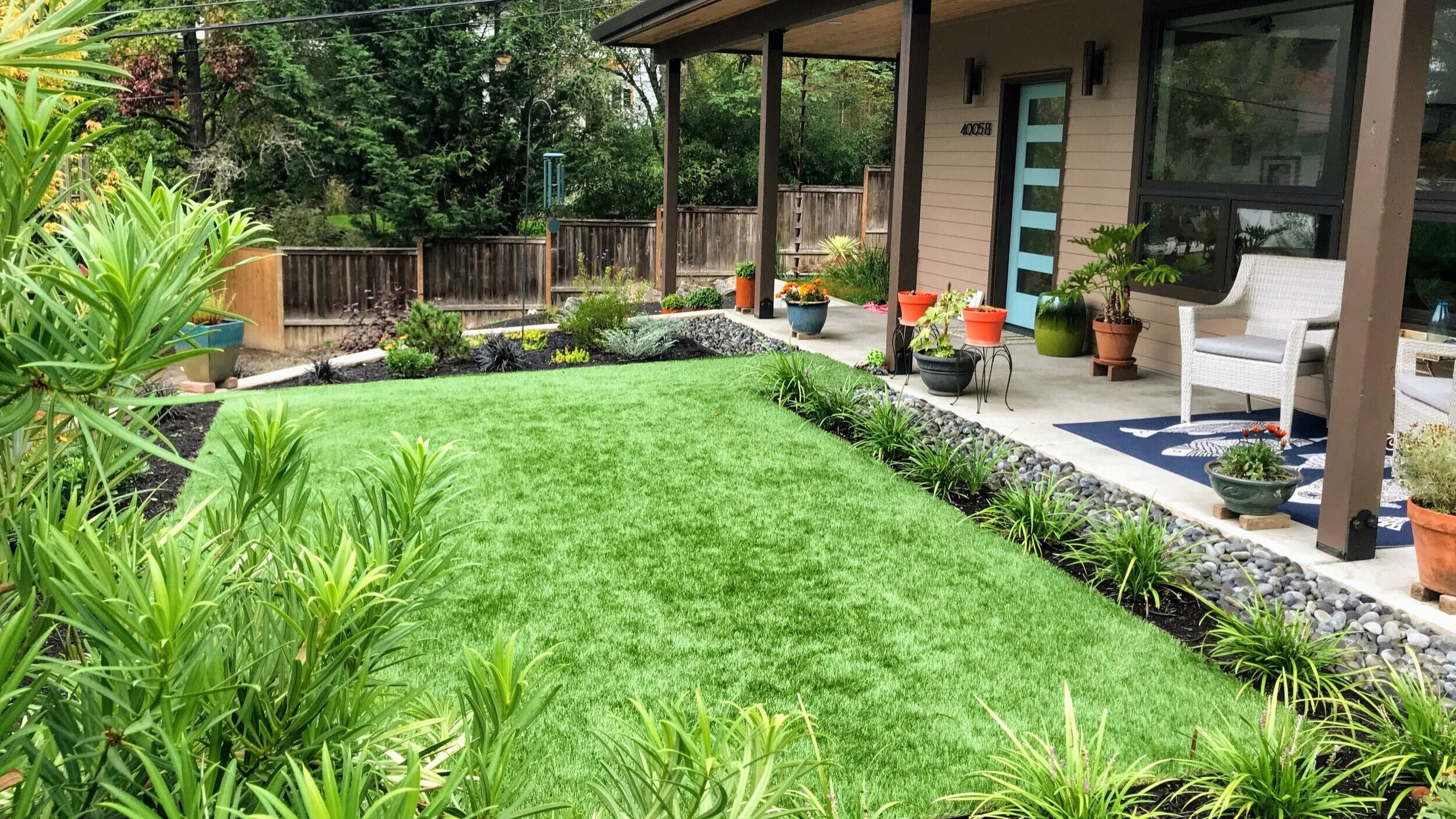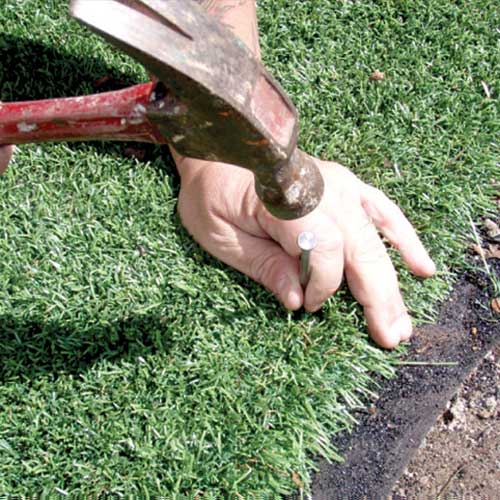Transform Your Yard with Professional Turf Installation Phoenix AZ Services
Transform Your Yard with Professional Turf Installation Phoenix AZ Services
Blog Article
Look Into the Environmental Perks of Opting for Artificial Lawn Solutions
The fostering of artificial turf services presents an engaging opportunity to address pressing ecological difficulties. By dramatically decreasing water usage and decreasing the application of damaging chemicals, these alternatives not just promote sustainable landscaping however likewise safeguard regional ecosystems.
Water Preservation Advantages
One of one of the most significant benefits of synthetic grass is its ability to save water. Standard turf yards call for significant watering, particularly in locations prone to dry spell or water limitations. On the other hand, fabricated grass does not require watering, dramatically minimizing the general need for water resources. This function is especially valuable in deserts where water shortage is a pushing problem.
By removing the requirement for normal watering, fabricated lawn adds to sustainable landscape techniques and assists mitigate the ecological effect of extreme water intake. In addition, the conservation of water reaches the decrease of runoff, which can lead to dirt erosion and river air pollution.
In addition, the installment of artificial lawn allows districts and homeowners to designate water resources extra efficiently, concentrating on essential uses such as drinking water and agriculture. The shift towards synthetic grass not just advertises accountable water usage yet likewise straightens with wider environmental goals intended at preserving natural deposits.
As areas increasingly focus on sustainability, the water preservation advantages of man-made lawn present a compelling instance for its adoption in domestic and business landscape design jobs.
Minimized Chemical Usage
The change to artificial turf dramatically lowers the reliance on chemical therapies typically used in all-natural grass maintenance. Standard grass monitoring generally includes the application of fertilizers, chemicals, and herbicides to promote development and control parasites. These chemicals can pose risks to human health and wellness, local wildlife, and the environment, adding to dirt and water contamination.
In comparison, artificial lawn eliminates the need for these harmful compounds. By minimizing the launch of artificial substances into the ecosystem, artificial turf promotes healthier soil and water systems.
Furthermore, the lack of chemical runoff related to synthetic grass installations assists shield local waterways from pollution, supporting water life and preserving biodiversity. Arizona artificial turf. As areas progressively focus on lasting practices, deciding for synthetic grass offers a practical service that straightens with ecological preservation objectives. With this shift, homeowner can appreciate lavish eco-friendly areas without compromising ecological wellness, leading the way for an extra sustainable future
Lower Carbon Footprint

Furthermore, the installment of man-made turf can result in substantial water preservation. Natural grass need substantial amounts of water for watering, which not only includes in the carbon impact connected with water removal and treatment however likewise stress local water resources. On the other hand, synthetic grass needs marginal maintenance, requiring no watering, thus significantly minimizing water usage and its connected power expenses.
In addition, the durability of synthetic grass adds to its lower carbon effect. With a life expectancy of as much as 15 years or more, the requirement for regular replacements is lessened, causing much less waste and reduced energy usage in production and dealing with conventional grass options. Generally, fabricated grass provides a sustainable option for environmentally conscious landscaping.
Environment Conservation
Habitat preservation is a crucial consideration in the discussion over landscape design selections, specifically when comparing synthetic grass to all-natural you can try here grass. All-natural grass lawns usually call for comprehensive maintenance, consisting of using herbicides, chemicals, and fertilizers, which can adversely affect local ecosystems. These chemicals can seep into the soil and rivers, damaging indigenous vegetation and animals and disrupting local environments.
On the other hand, man-made grass presents a possibility to lower the ecological impact of landscaping. By deciding for artificial turf, house owners can minimize the interruption of all-natural habitats linked with traditional lawn care methods. Synthetic grass eliminates the requirement for harmful chemicals, thereby securing nearby wildlife and maintaining the stability of bordering communities. The setup of man-made lawn can lead to the conversion of previous grass areas into even more biodiverse landscapes, such as pollinator gardens or indigenous plant areas, which can support local wild animals.
Inevitably, the transition to man-made lawn not only saves water and reduces upkeep efforts but also fosters a much more unified connection between human tasks and the natural surroundings, advertising environment preservation at the same time.
Long-Term Sustainability
Lasting sustainability is a critical variable in reviewing the article advantages of fabricated grass over traditional turf yards. Among the most substantial advantages of synthetic grass is its toughness; it can last approximately 15-20 years with minimal upkeep, whereas natural yard needs frequent reseeding and replacement. This longevity minimizes the requirement for constant sources, such as water, plant foods, and chemicals, which are essential for keeping a healthy and balanced turf lawn.
Additionally, synthetic grass contributes to a decrease in carbon discharges associated with grass treatment tools. Standard lawns frequently call for gas-powered lawn mowers, leaners, and blowers, every one of which add to air contamination. Arizona artificial turf. On the other hand, synthetic grass gets rid of the need for such devices, advertising a cleaner environment
Moreover, the production of artificial lawn progressively utilizes recycled products, boosting its sustainability account. As suppliers take on environmentally friendly methods, the environmental impact of synthetic grass continues to reduce.

Final Thought
The adoption of synthetic grass remedies presents significant environmental benefits, consisting of significant water preservation, reduced dependence on dangerous chemicals, and a reduced carbon footprint. Man-made grass aids in preserving all-natural environments by decreasing land disruption and advertising lasting sustainability via the usage of sturdy materials. Jointly, these elements emphasize the possibility of synthetic grass to add favorably to ecological wellness and provide a feasible option to traditional landscape design practices in a significantly resource-conscious world.
In contrast, artificial lawn does not need watering, considerably decreasing the overall demand for water sources. By decreasing the launch of artificial substances right into the community, man-made grass promotes much healthier dirt and water systems.
In addition, the installment of fabricated turf can result in substantial water preservation. In comparison, fabricated turf requires very little upkeep, needing no watering, consequently dramatically minimizing water usage and its connected power expenses.

Report this page